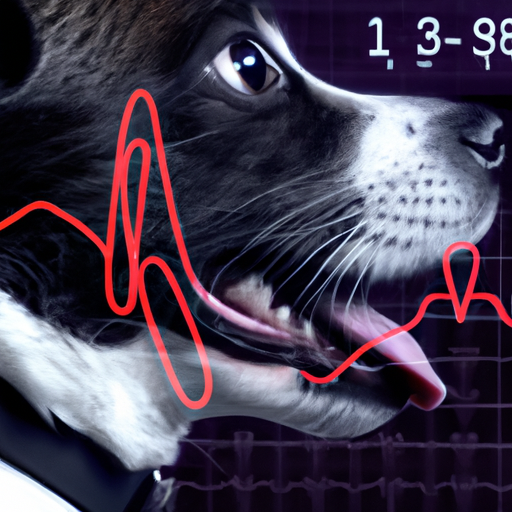Understanding Your Dog’s Heart Rate
As a caregiver, it’s important that you can effectively monitor and understand your dog’s health. One key indicator of your dog’s overall health is their heart rate. Like the rhythm of a song, a dog’s heart rate can tell a story about its body’s harmony or distress.
A dog’s heart rate varies based on factors such as age, size, and overall health. But don’t fret, we’ll dive into these variables in the sections below.
Heart Rate Ranges for Different Dog Breeds and Sizes
Every dog breed and size has a unique range of normal heart rates. Let’s take a look at the typical heart rates for different dog categories:
| Size | Average Heart Rate (beats per minute) |
|---|---|
| Small dogs (<30lbs) | 120-160 |
| Medium dogs (30-60lbs) | 100-140 |
| Large dogs (>60lbs) | 60-120 |
Please remember these are average figures. Like us, each dog is unique and might not fit perfectly into these categories.
Why Your Dog’s Heart Rate Might Change
Sometimes, you’ll notice your dog’s heart rate is different from the norm. In these situations, you need to consider the following:
- Activity Level: Just as your heart rate increases with exercise, so does your dog’s. If they’ve been running around the park, expect a higher heart rate.
- Stress or Anxiety: Dogs can experience stress and anxiety just like humans. These conditions can lead to a faster heart rate.
- Health Conditions: Certain health conditions like heart disease or fever can also affect your dog’s heart rate.
How to Check Your Dog’s Heart Rate
Now that we’ve covered the basics, let’s learn how you can check your dog’s heart rate:
- Place your hand on your dog’s chest, just behind their front leg. You should be able to feel their heart beating.
- Count the number of beats you feel in 15 seconds.
- Multiply that number by 4 to get the beats per minute (bpm).
Remember, consistently high or low heart rates could indicate a health problem. Always consult with your vet if you’re worried.
When to Seek Professional Help
If you notice any of the following, it would be wise to consult a vet:
- Your dog’s heart rate is consistently outside the typical range for their size or breed.
- There are noticeable changes in your dog’s heart rhythm.
- Your dog is showing other signs of distress, such as panting, lethargy, or loss of appetite.
Frequently Asked Questions
Q: What’s a normal heart rate for a dog?
A: A dog’s heart rate can range from 60 to 160 beats per minute depending on their size and breed.
Q: Can stress affect my dog’s heart rate?
A: Yes, stress and anxiety can cause your dog’s heart rate to increase.
Q: How often should I check my dog’s heart rate?
A: Regularly checking your dog’s heart rate can help you better understand their health. However, the frequency can depend on their age, size, and overall health.
Remember, you’re not just a caregiver – you’re a vital part of your dog’s health journey. By understanding and monitoring their heart rate, you’re taking an active role in maintaining their well-being.



